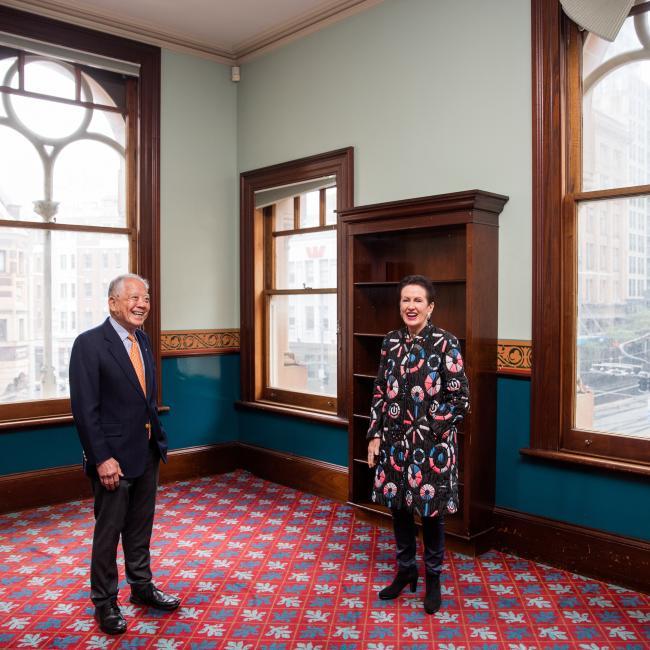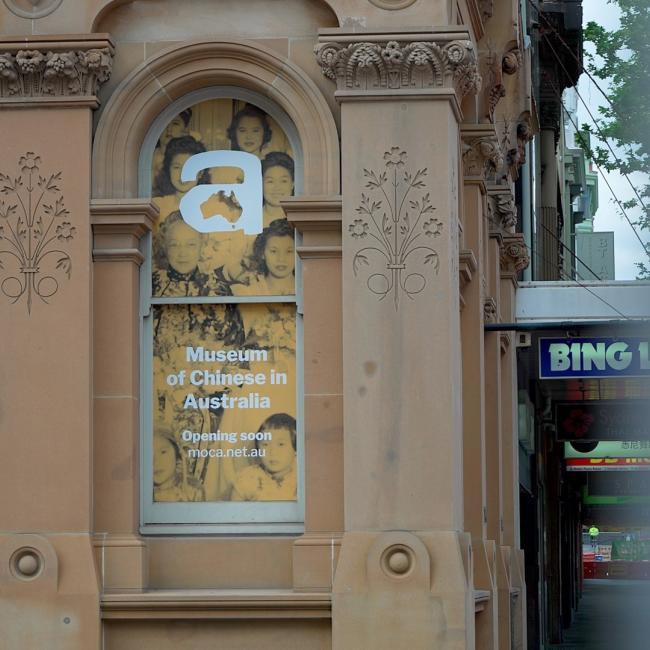The plan was hatched over a long lunch in Sydney’s Chinatown.
“That’s quite appropriate in a Chinese context,” says Stephen FitzGerald, who was one of the diners that day. “You never do anything serious without discussing it over a meal.”
A dozen community leaders had been brought together by Daphne Lowe Kelley who, as President of the Chinese Australian Historical Society, felt Sydney needed a dedicated museum to conserve the history of Chinese people in Australia.
“There was a sense of urgency about it because the building housing the Haymarket Library was about to become available,” says Dr FitzGerald, who served as Australia’s first Ambassador to Beijing from 1973 to 1976.
The historic three-storey building is a Chinatown landmark and, with the library moving out, was considered by those at the lunch meeting to be the obvious home for a new Chinese Australian museum. It would be big enough to host not just a range of different exhibitions and interactive programming but also community led events and initiatives.
“Everyone was full of wonderful ideas about what this museum would do,” recalls Dr FitzGerald, who, along with Ms Lowe Kelley, is now the museum’s co-deputy chair.
“Ultimately, we decided the Museum of Chinese in Australia should be an exemplar of how to present the history of the Chinese diaspora in one country.”
That’s no small task.
More than 1.2 million Australians have Chinese heritage. The Chinese Australian community reflects a nuanced tapestry of experiences dating back more than 200 years. There are stories of refugees, entrepreneurs, brilliant researchers, sportspeople, community leaders and students—stories of hardship and remarkable achievement.

Personal ‘awakening’ for museum chair
Perhaps one of the best-known Chinese Australians is Dr John Yu, who was also at the founding lunch.
A former Australian of the Year, Dr Yu was the driving force behind the Westmead Children's Hospital in western Sydney, which he headed for almost 20 years before retiring in 1997.
“While I am clearly Chinese and I'm proud of my Chinese heritage, I've actually never had very much to do with the Chinese community,” says Dr Yu.
Born in Nanjing, he arrived in Australia as a three-year-old. Along with his mother and sister, he joined relatives who were descended from Chinese people involved in the Victorian gold rush in the mid-1800s.
“The idea was that my sister and I should be very much part of the Australian community,” Dr Yu says. “Nobody spoke Chinese to me because they wanted me to be what was then considered to be a ‘true Aussie’.”
It wasn’t until five decades later that he enrolled in Mandarin classes, but he struggled to keep up while working long hours at the hospital. “I tried hard,” he laughs. “But it was hopeless.”
Dr Yu describes his time working on the project as a personal awakening.
“As I get older, I see how important my Chinese heritage is,” says Dr Yu. “I think we need to encourage people to have a good curiosity about the past. That’s why it’s important that what we look at in the museum is honest and factual. So, education and academic rigor is going to be a very important part of what we do.”
But he also wants it to be a place for fun.
A former trustee of the acclaimed Powerhouse Museum and Deputy President of the Art Gallery of New South Wales, Dr Yu is passionate about the need for exhibitions to be anything but boring.
“I think you learn best when you enjoy what you’re hearing about and what you’re seeing,” he says. “Technology today offers all sorts of ways of exposing people to the rich Chinese story, and all the things that make us different.”

Honouring past and contemporary contributions
Stephen FitzGerald agrees the museum should honour not just the past but also the contemporary contributions of Chinese Australians, such as John Yu.
“It really is such a rich field,” he says. “Everything from science and technology to the entertainers that we know and see on our stages and televisions. I hope young Chinese Australians, in particular, feel a sense of pride when they visit the museum.”
A lot has happened since that first Chinatown lunch. The bid to take over the old library building was successful—but the COVID-19 pandemic has delayed an official opening.
John Yu won’t be chair when the doors do open, sometime in 2022.
“I’ll be 87 when that happens,” he says. “I’m thankful for what the project has given me personally. It’s connected me to the Chinese community. But it’s time for someone younger to have a go.”

The National Foundation for Australia-China Relations is supporting the establishment of the new Museum of Chinese in Australia through its grants program. The Foundation is dedicated to creating a national platform that engages government, business, and communities to support practical collaboration with China and engaging Australia’s diverse community in support of this.
